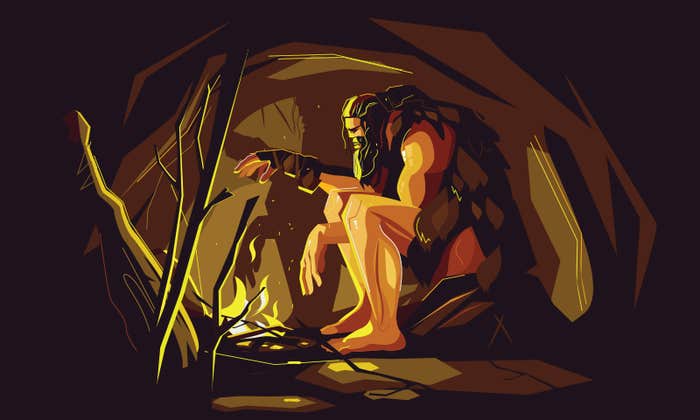Evolution is happening all the time, all around us. It can reshape entire populations of a species in a wink of time—just a couple of generations.
Take Darwin’s finches, which are mostly native to the Galapagos Islands. In the 1970s, Peter and Rosemary Grant, Princeton University evolutionary biologists, famously carried out some of the first studies to demonstrate evolution in action in these island birds. Alternating periods of drought and El Niño flooding favored the availability of different seed types on the islands, the dominant food source for the birds. These different seeds, in turn, gave advantage to different beak sizes in the finches, the Grants found. Over a period of just a few years, dominant beak size in the island finches varied dramatically, as some birds died off and others passed their traits onto offspring.
But understanding how short-term adaptations to environmental conditions, often called micro-evolution, might relate to the longer-term patterns of evolution, such as how distinct species emerge over deep time, has remained one of evolutionary biology’s greatest challenges. Many biologists have assumed that high levels of genetic variation in a particular trait, such as beak size in birds, would disappear over time as new environmental conditions stabilized and certain characteristics were selected for—in other words, that short-term patterns of evolution would have little relevance to long-term ones.
Genetic variation is the substrate needed for evolution.
But a new paper published in the journal Science argues that, in fact, traits that are highly variable and evolve quickly, over short time scales, are often the same ones that shape the direction of long-term evolution of new species. The researchers who authored the paper sifted through vast datasets on 410 traits in 129 living species as well as 10,594 plant and animal fossil samples from 10 to 7.6 million years ago. Using this data, they graphed responsiveness to environmental pressures for many key traits across species, including beak size, number of offspring, and flower size.
Christophe Pelabon, a biologist at the Norwegian University of Science and Technology who co-authored the paper, says he and his colleagues were stunned to find a strong relationship between the two measures—short-term evolution and long-term evolution—one that was consistent across multiple species and timescales. “This was very, very surprising,” he says.
Pelabon says the finding suggests that how easily a trait changes over a few generations—which they call evolvability—is a better way to predict that trait’s survival over the longer term than other measures, such as how faithfully it is passed from one generation to the next, known as heritability, a measure widely used in the field since the 1930s. As a possible scenario that could explain their unexpected finding, Pelabon and his colleagues suggest that while populations evolve toward an optimum—a perfect match to their environment—this optimum is a moving target, one that is rapidly changing, potentially allowing genetic variation in any particular trait to persist and even increase over longer timescales.
James Stroud, a biologist at Georgia Tech, who was not involved in the research, says the study provides a fascinating insight: “As selection changes through time to chase new optima, the genetic variation of traits under selection may increase from this evolutionary back and forth,” he says. “This additive genetic variance, termed evolvability, is a window into evolution’s past.”
Patrick Rohner, a professor at the University of California, San Diego in the department of ecology, behavior, and evolution, also not involved in the study, says if the finding holds true, it would make evolution much more predictable than we often assume. “Genetic variation is the substrate needed for evolution,” he says. But “this genetic variation should erode over time.” That’s why the finding is so surprising. At the same time, selection pressures are constantly changing. “Traits that helped organisms survive 30 generations ago are not necessarily the traits that are favored now,” he says.
Pelabon says the finding has important implications for species survival under climate change, which is forcing adaptation on timescales not seen before in recent history. “What will happen when you change your environment very rapidly toward something that is extreme in one direction?” he says. ![]()
Lead image: OlgaChernyak / Shutterstock

























